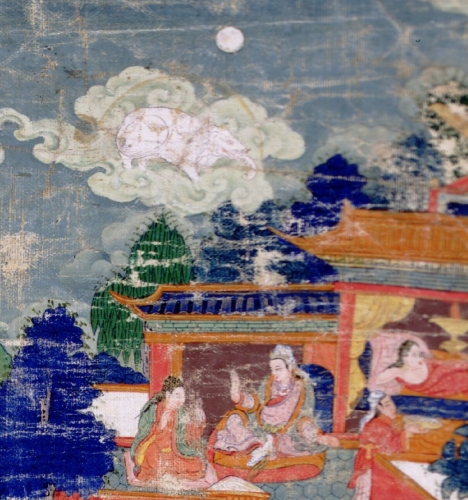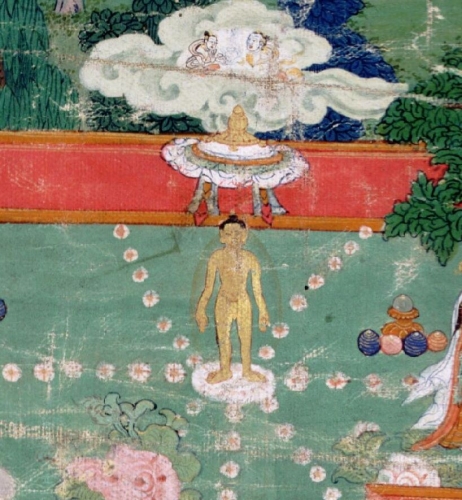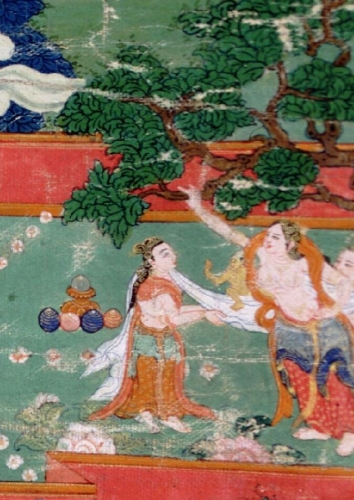Buddhist practice and Buddhist art have been inseparable in the Himalayas ever since Buddhism arrived to the region in the eighth century. But for the casual observer it can be difficult to make sense of the complex iconography. Not to worry—Himalayan art scholar Jeff Watt is here to help. In this “Himalayan Buddhist Art 101” series, Jeff is making sense of this rich artistic tradition by presenting weekly images from the Himalayan Art Resources archives and explaining their roles in the Buddhist tradition.
Himalayan Art 101: Stories of the Buddha Part 2, A Quick Guide
 There is a tremendous corpus of art devoted to the narrative stories surrounding the Buddha, his students, and their previous lives. In the Tibetan Buddhist tradition these narratives are grouped into three categories: the life story of Shakyamuni Buddha, the Jataka tales of the previous lives of the Buddha, and the Avadāna stories, which can include the previous two categories in addition to stories about the students of the Buddha. All of these stories can be depicted on either a single painted composition or in series of paintings comprising a single large artwork.
There is a tremendous corpus of art devoted to the narrative stories surrounding the Buddha, his students, and their previous lives. In the Tibetan Buddhist tradition these narratives are grouped into three categories: the life story of Shakyamuni Buddha, the Jataka tales of the previous lives of the Buddha, and the Avadāna stories, which can include the previous two categories in addition to stories about the students of the Buddha. All of these stories can be depicted on either a single painted composition or in series of paintings comprising a single large artwork.
It is important to recognize the unique visual characteristics for each of the three categories of stories in order to distinguish them. Paintings of the life story of Shakyamuni Buddha utilize both imagery unique to the category and imagery shared with the Avadāna category. Very unique visual forms are the keys to recognizing a composition or series of compositions representing the life story of the Buddha.

The images shown all come from the same painting. In the first image, the primary visual cue is the representation of the white elephant descending from the heavens, as described in the dream of Queen Mayadevi.  The second depicts the birth of the Buddha under a tree and the third depicts the very first steps in the eight directions taken by the baby Buddha.
The second depicts the birth of the Buddha under a tree and the third depicts the very first steps in the eight directions taken by the baby Buddha.
A number of events from the Buddha’s life story are described in the 100 narratives of the Avadāna stories. The white elephant, the birth, and first steps are always depicted in the life story but never found in the other two categories of Jataka or Avadāna stories. Thus, when any of these three scenes are found in a composition, the subject of the painting must be the life story of Shakyamuni Buddha.
Continue to Part 3: Jataka Tales Quick Guide
Take a look at the images in more detail at Himalayan Art Resources here.
Thank you for subscribing to Tricycle! As a nonprofit, we depend on readers like you to keep Buddhist teachings and practices widely available.